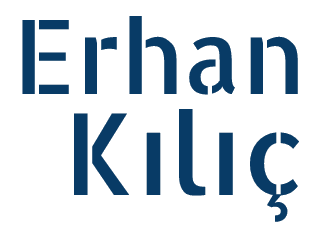Bilgisayar Bilimi ve Programlamada Veri Türleri
Kod yazarken her şeyin temelinde veriler yatar. Bir web uygulamasında kullanıcı bilgilerini saklamak, bir oyunda puanları hesaplamak ya da bir veri analizi yapmak isteseniz, verilerle çalışmanın sırrı veri türlerinde gizli. Peki, veri türleri nedir ve neden bu kadar önemlidir? Bu yazıda, programlamanın kalbi olan veri türlerini keşfedeceğiz. Kendi deneyimlerimden örneklerle, bu temel kavramı hem yeni başlayanlar hem de deneyimli geliştiriciler için anlaşılır hale getireceğim.
Veri Türleri Nedir?
Veri türleri, programlamada verilerin ne olduğunu ve nasıl kullanılabileceğini belirler. Bir nevi, verilerin kimlik kartıdır: Hangi değerleri saklayabileceğinizi ve bu değerlerle neler yapabileceğinizi söyler. Örneğin, bir sayıyla çarpma işlemi yapabilirsiniz ama bir metni çarpamazsınız, değil mi? İşte veri türleri, bu kuralları koyar ve kodunuzu daha düzenli, hızlı ve hatasız yapar.
Veri türleri genellikle iki ana gruba ayrılır: ilkel veri türleri ve bileşik veri türleri. Şimdi bunları tek tek inceleyelim ve benim projelerimden örneklerle nasıl kullanıldığını görelim.
İlkel Veri Türleri: Programlamanın Temel Taşları
İlkel veri türleri, kodun en basit yapı taşlarıdır. Hızlıdırlar, doğrudan donanım tarafından desteklenirler ve her programcı için vazgeçilmezdir. İşte en yaygın olanları:
- Tamsayı (int): Ondalık kısmı olmayan sayılar için kullanılır. Mesela, bir e-ticaret sitesinde ürün stok sayısını tutarken tamsayı kullanıyorum. Örnek (Python):
stok_adedi = 100
- Kayan Noktalı Sayı (float): Ondalık sayılar için ideal. Bir keresinde, bir veri görselleştirme projesinde grafiklerin ölçeklerini hesaplarken kayan noktalar hayat kurtardı! Örnek (Python):
ortalama_puan = 4.75
- Karakter (char): Tek bir harfi veya sembolü temsil eder. Örneğin, bir sınav otomasyonunda öğrenci notlarını (A, B, C gibi) saklamak için kullanıyorum. Örnek (C):
char not = 'A';
- Boole (bool): Sadece True veya False değerlerini alır. Bir web uygulamasında kullanıcının oturum açıp açmadığını kontrol ederken sıkça kullanıyorum. Örnek (Python):
oturum_acik = True
- Bayt: Küçük veri birimleri için kullanılır. Düşük seviyeli dosya işlemleri veya gömülü sistemlerde faydalı. Örnek (Java):
byte veri = 8;
Kendi Deneyimim: Bir keresinde, bir IoT projesinde sensör verilerini bayt olarak işleyerek belleği optimize ettim. Doğru veri türünü seçmek, hem hız hem de performans açısından fark yaratıyor!
Bileşik Veri Türleri: Karmaşık Verileri Düzenlemenin Yolu
İlkel türler basit veriler için harikadır, ama daha karmaşık yapılarla çalışmak için bileşik veri türlerine ihtiyacınız var. Bunlar, birden fazla veriyi bir arada tutar ve projelerinizi düzenli hale getirir. İşte en popüler olanları:
- Dizi: Aynı türden verileri bir arada tutar. Örneğin, bir blog sitesinde son 5 yorumu saklamak için dizi kullanıyorum. Örnek (Python):
yorumlar = ["Harika yazı!", "Teşekkürler!", "Devamını bekliyoruz"]
- Dize (string): Metinle çalışırken vazgeçilmez. Bir web uygulamasında kullanıcı adlarını saklamak için kullanıyorum. Örnek (JavaScript):
let mesaj = "Hoş geldiniz!";
- Yapı (struct) ve Sınıf: Karmaşık verileri modellemek için ideal. Örneğin, bir öğrenci yönetim sisteminde her öğrencinin adını ve notlarını bir arada tutuyorum. Örnek (C++):,
struct Ogrenci {
string ad;
int not;
};
- Liste: Dinamik olarak büyüyüp küçülebilen veri yapıları. Bir e-ticaret sitesinde sepet öğelerini liste olarak saklıyorum. Örnek (Python):
sepet = ["telefon", "kulaklık", "şarj cihazı"]
- Sözlük (Dictionary): Anahtar-değer çiftleriyle çalışır. Bir keresinde, bir kullanıcı yönetim panelinde her kullanıcının bilgilerini sözlükle saklayarak erişimi hızlandırdım. Örnek (Python):
kullanici = {"ad": "Ali", "yas": 25, "rol": "yönetici"}
- Küme (Set): Benzersiz değerler için harika. Örneğin, bir blogda etiketleri tekrar etmeden saklamak için kullanıyorum. Örnek (Python):
etiketler = {"teknoloji", "programlama", "yazılım"}
- Sayımlar (enum): Sabit değerleri tanımlamak için kullanılır. Bir takvim uygulamasında günleri enum ile tanımladım, böylece kod daha okunabilir oldu. Örnek (C#):
enum Gunler { Pazartesi, Sali, Carsamba, Persembe, Cuma }
Özel Veri Türleri: Özel Durumlar için Özel Çözümler
Bazı programlama dilleri, belirli ihtiyaçlar için özel veri türleri sunar. İşte birkaç örnek:
- DateTime: Tarih ve saat işlemleri için kullanılır. Bir etkinlik planlama uygulamasında, etkinlik tarihlerini DateTime ile yönetiyorum. Örnek (Java):
import java.util.Date; Date bugun = new Date();
- İşaretçi: Bellek adreslerini yönetmek için kullanılır. C ile düşük seviyeli bir proje yaparken işaretçilerle çalışarak performansı optimize ettim. Örnek (C):
int* ptr; int x = 10; ptr = &x;
- Fonksiyon: Fonksiyonları veri gibi kullanmak, özellikle fonksiyonel programlamada çok güçlü. Örnek (Python):
def kare(x): return x * x islem = kare
Doğru Veri Türünü Seçmenin Püf Noktaları
Doğru veri türünü seçmek, kodunuzun hızını, doğruluğunu ve okunabilirliğini doğrudan etkiler. İşte kendi projelerimden öğrendiğim bazı ipuçları:
- Basit tutun: Tamsayı veya Boole gibi ilkel türler, basit veriler için yeterlidir ve hızlıdır.
- Karmaşık veriler için bileşik türler: Birden fazla bilgiyi bir arada tutmak için sınıflar veya sözlükler kullanın. Örneğin, bir kullanıcı yönetim sisteminde her kullanıcıyı bir sınıf olarak tanımlıyorum.
- Dinamik yapılar: Sepet gibi değişken uzunlukta veriler için listeler veya kümeler tercih ediyorum.
- Belleği düşünün: Gömülü sistemlerde veya büyük veri işlerken, bayt gibi küçük türler belleği korur.
- Okunabilirlik için enum: Sabit değerlerle çalışırken, enum’lar kodu daha anlaşılır kılıyor.
- Geleceği planlayın: Projenizin büyüyebileceğini düşünerek esnek veri türleri seçin. Örneğin, bir liste yerine sözlük, ileride ek özellikler için daha uygun olabilir.
Kendi Deneyimim: Bir keresinde, yanlış veri türü seçimi yüzünden bir web uygulamasında performans sorunu yaşadım. Kullanıcı verilerini string olarak saklamak yerine sözlük kullandığımda, erişim süresi yarıya indi!
Sonuç: Veri Türleri Kodunuzun Kalbidir
Veri türleri, programlamanın temelini oluşturur. Doğru türü seçmek, sadece kodunuzu daha hızlı ve hatasız yapmakla kalmaz, aynı zamanda projelerinizi daha düzenli ve sürdürülebilir hale getirir. İster bir web sitesi geliştiriyor olun, ister bir veri analizi yapıyor olun, veri türlerini iyi anlamak sizi daha iyi bir programcı yapar.
Siz de bir programcı olarak veri türleriyle ilginç deneyimler yaşadınız mı? Yorumlarda paylaşın, birlikte tartışalım! Daha fazla programlama ipucu için bloguma göz atın veya benimle iletişime geçin!


